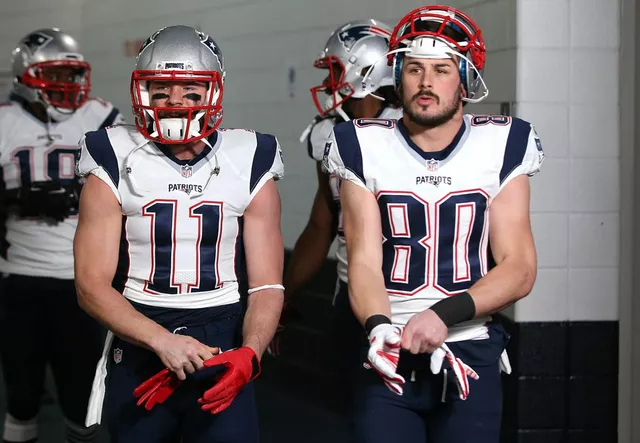Do NFL teams have to pay out the contracts of players they cut?

Exploring the Financial Implications of NFL Player Cuts
The National Football League (NFL) is the most popular sports league in the United States, and it's both a business and a sport. Every year, teams make decisions about which players to keep and which to release, and when it comes to contracts, the financial implications of those decisions can be significant. But what happens when NFL teams decide to cut players who have contracts in place?
When a player is released before their contract has expired, the team is still obligated to pay the remaining salary due. The amount of money owed to the player depends on the type of contract they had with the team. For example, if the player had a guaranteed contract, the team would be obligated to pay the full amount of the remaining salary. If the player had a non-guaranteed contract, the team may be able to negotiate a lower amount with the player.
In addition, the team is responsible for paying any bonuses that the player was due to receive. Bonuses may include signing bonuses, performance bonuses, and incentive bonuses, which are all calculated based on the length of the player’s contract. For example, if a player was due to receive a signing bonus of $2 million for signing a four-year contract, and the team releases the player before the contract is up, the team would still be obligated to pay the full $2 million.
The team may also be responsible for paying a portion of the player’s salary if they are released after the season has started. This is often referred to as a “split salary,” and it is calculated based on the number of weeks in the season that the player was with the team. For instance, if a player was signed to a four-year, $20 million contract, and the team releases the player after the first eight weeks, the team would be responsible for paying $10 million of the remaining salary.
Finally, the team may be on the hook for legal fees if the player decides to file a grievance against the team. This could include filing a lawsuit for breach of contract, or for wrongful termination. In such cases, the team would be responsible for paying the legal fees associated with the dispute.
The financial implications of releasing a player before their contract has expired can be significant, but teams must weigh the long-term implications of their decisions against the short-term financial implications. Every situation is unique, and teams must carefully consider all the factors before making a decision.
What Happens to NFL Player Contracts When Teams Release Players?
When an NFL team releases a player, the team is no longer obligated to pay the player the remaining amount on the contract. The team is required to pay the player any guaranteed money that was written into the contract. Any non-guaranteed money, such as performance bonuses, is no longer owed by the team.
The NFL's collective bargaining agreement (CBA) states that teams are not obligated to pay players any money that is not guaranteed by the contract. This means that if a team cuts a player with two years left on their deal, they are only required to pay the player the money that was guaranteed in the contract. The team is not obligated to pay the player any other money.
When a player is released, the team is also not obligated to pay the player any of the money that was to be paid in future years. This is because the team is no longer obligated to the player. The team may choose to pay the player some of the money that was to be paid in future years, but it is not required to do so.
The CBA also states that if a player is released and signed by another team, the original team is not responsible for any of the money owed to the player. This includes any guaranteed money that was to be paid in future years. The new team is responsible for paying the player the money that is owed.
When a player is released, the team is no longer obligated to pay the player any money that was to be paid in future years. The team may choose to pay the player some of the money that was to be paid in future years, but it is not required to do so. The new team is responsible for paying the player the money that is owed.
The NFL's collective bargaining agreement (CBA) states that teams are not obligated to pay players any money that is not guaranteed by the contract. This means that if a team cuts a player with two years left on their deal, they are only required to pay the player the money that was guaranteed in the contract. The team is not obligated to pay the player any other money.
The CBA also states that if a player is released and signed by another team, the original team is not responsible for any of the money owed to the player. This includes any guaranteed money that was to be paid in future years. The new team is responsible for paying the player the money that is owed.
In summary, when a team releases a player, the team is no longer obligated to pay the player the remaining amount on the contract. The team is only required to pay the player any guaranteed money that was written into the contract. Any non-guaranteed money, such as performance bonuses, is no longer owed by the team. If the player is signed by another team, the original team is not responsible for any of the money owed to the player.
Examining the Legal Obligations of NFL Teams to Pay Out Player Contracts
The National Football League (NFL) is a professional sports league made up of 32 teams. It is the highest level of American football in the world and its teams have a large fan base. Every year, teams have to make difficult decisions about which players to keep and which to cut. This includes deciding whether or not to pay out the contracts of players they cut. But what are the legal obligations of NFL teams when it comes to paying out player contracts?
When a team cuts a player, they must pay out the remaining balance on the player's contract. This is known as the "Dead Money" rule. According to the collective bargaining agreement (CBA) between the NFL and the NFL Players Association, teams are obligated to pay out the contracts of players they cut. This means that teams cannot simply cut a player and not pay out the remaining balance on their contract.
The amount of money a team must pay out when they cut a player depends on the player's contract. For example, if a player has a four-year contract and is cut in the middle of the third year, the team must pay out the remaining portion of the third year as well as the fourth year. This does not include any bonuses or signing bonuses that the team may have agreed to pay when the player was first signed.
However, there are some exceptions to this rule. If a player is released due to injury, the team is not obligated to pay out the remaining balance of the player's contract. This is because the team can argue that the player is no longer able to fulfill the requirements of the contract due to the injury. In addition, if a player is released due to a breach of contract, the team is not obligated to pay out the remaining balance of the contract.
The NFL also has a salary cap system in place. This means that teams must stay within a certain budget when it comes to paying out contracts. If a team goes over the salary cap, they may be subject to fines and penalties. This means that teams may be reluctant to pay out the remaining balance of player contracts if they are close to exceeding the salary cap.
In summary, NFL teams are legally obligated to pay out the contracts of players they cut. This includes the remaining balance of the contract as well as any bonuses or signing bonuses that were agreed upon when the player was signed. However, there are some exceptions to this rule such as if a player is released due to injury or a breach of contract. In addition, teams must stay within the salary cap when paying out contracts or they may be subject to fines and penalties.
Understanding the Financial Impact of NFL Player Cuts on Teams
Every year, NFL teams make the difficult decision to part ways with players for a variety of reasons, including salary cap issues, age, and performance. But what financial impact does this decision have?
When a team decides to cut a player, it has to consider the financial implications that come with it. The team is responsible for paying out the remainder of the player's contract, which can be a significant amount of money. The amount of money owed to the player varies based on the length of the contract and the amount of money he was originally signed for. In some cases, the team may have to pay out the entire remaining amount of the contract, while in others, the team may be able to negotiate with the player to pay a lesser amount.
The financial impact of cutting a player can also include the money required to sign a replacement player. This is especially true in cases where the team needs to sign a talented player to replace the one they just cut. The money spent on a replacement player could potentially be more than what was paid out to the player they cut. This is why it is important for teams to take a long-term approach when making decisions on personnel moves.
The financial impact of cutting a player can also extend beyond the team's own coffers. In some cases, the player's former team may be required to pay a portion of the player's salary to his new team. This is known as the "offset" clause, and it can be a significant amount of money. This money can be used by the new team to help offset the cost of signing the player.
Finally, the financial impact of cutting a player can extend to the NFL itself. When a team cuts a player, the league may have to pay out a portion of the player's remaining salary in the form of a "franchise tag." This money is used to help keep the salary cap in check, and can be a significant amount of money. It is important for teams to consider this financial impact when making decisions on personnel moves.
In conclusion, when NFL teams make the difficult decision to cut a player, they must consider the financial implications of their decision. Teams must weigh the amount of money they will have to pay out the player, the cost of signing a replacement player, and any potential offset payments to the player's new team. They must also consider the impact this decision may have on the NFL's salary cap. By considering all of these factors, teams can make informed decisions and avoid any unnecessary financial burdens.
- April 4, 2023
- Cassius Windham
- 0 Comments
- Permalink



